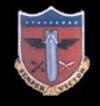


|
[Search
Tip: Use " " for better search results ex. "John Q. Doe";
"City of ..."]
|
|
Group
Mission # 03 The planes of the group returned to Guam early on the morning of 14 April. The crews were tired and plenty ready to hit the sack after debriefing was over. As after all missions, the girls of the Red Cross were on hand to serve up hot coffee and doughnuts to the returning combat men. If there had been any doubts on the minds of anyone that we were really putting out an aerial blitz of the Japanese major cities, that doubt was quickly dispelled when, the following day the first attack on Tokyo, the 39th joined the rest of the wing in a night fire strike at the suburban city of Kawasaki. Kawasaki was just across the Tama River from Tokyo and was actually a part of the greater Tokyo area. The suburb was important as a transportation center - the Tokaido mainline railway from Japan's capitol of Nagoya, Osaka and points southwest went right through Kawasaki. In addition, there were plenty of inflammable targets in place. Nine planes each from the 60th and 61st and five from the 62nd Squadron were off on the attack. Eighteen B-29s were listed as bombing the target. Enemy opposition was heavier at Kawasaki than had been seen before. There were only about fifty enemy fighters in the air, but the flak was fairly heavy. For the first time returning crewmen reported the famous Japanese "Balls of Fire." These were believed to be jet propelled fighters of some sort, perhaps the notorious Bakas, such as were later captured and identified on Okinawa. Three of the group's planes received minor damage from flak. There are some - including engineers and other people who should know - who say that a B-29 cannot execute a loop. But there were crew 21 of the 61st Squadron, Airplane Commander Captain William "Buck" Senger. It was on this night mission to Kawasaki that the think was done. The "City of Pittsfield, Mass., " went into target at 6,900 feet. Just after bombs away, the plane was caught in the down draft of the thermal. With nose down, it plunged toward the ground out of control. Senger and his pilot, Lt. Gavin W. Kowalke, worked frantically to right the aircraft. Then suddenly they passed toward the center of the current and were seized by an updraft that carried them upward and flipped them over on their back. Then in order to get back into a right-side-up position, Senger pulled the ship through the rest of the loop and headed to Guam. |
 |
|||||||
6 |
6
|
||||||
Copyright © 2000 - 2025 - 39th.org|39thbombgroup.org
